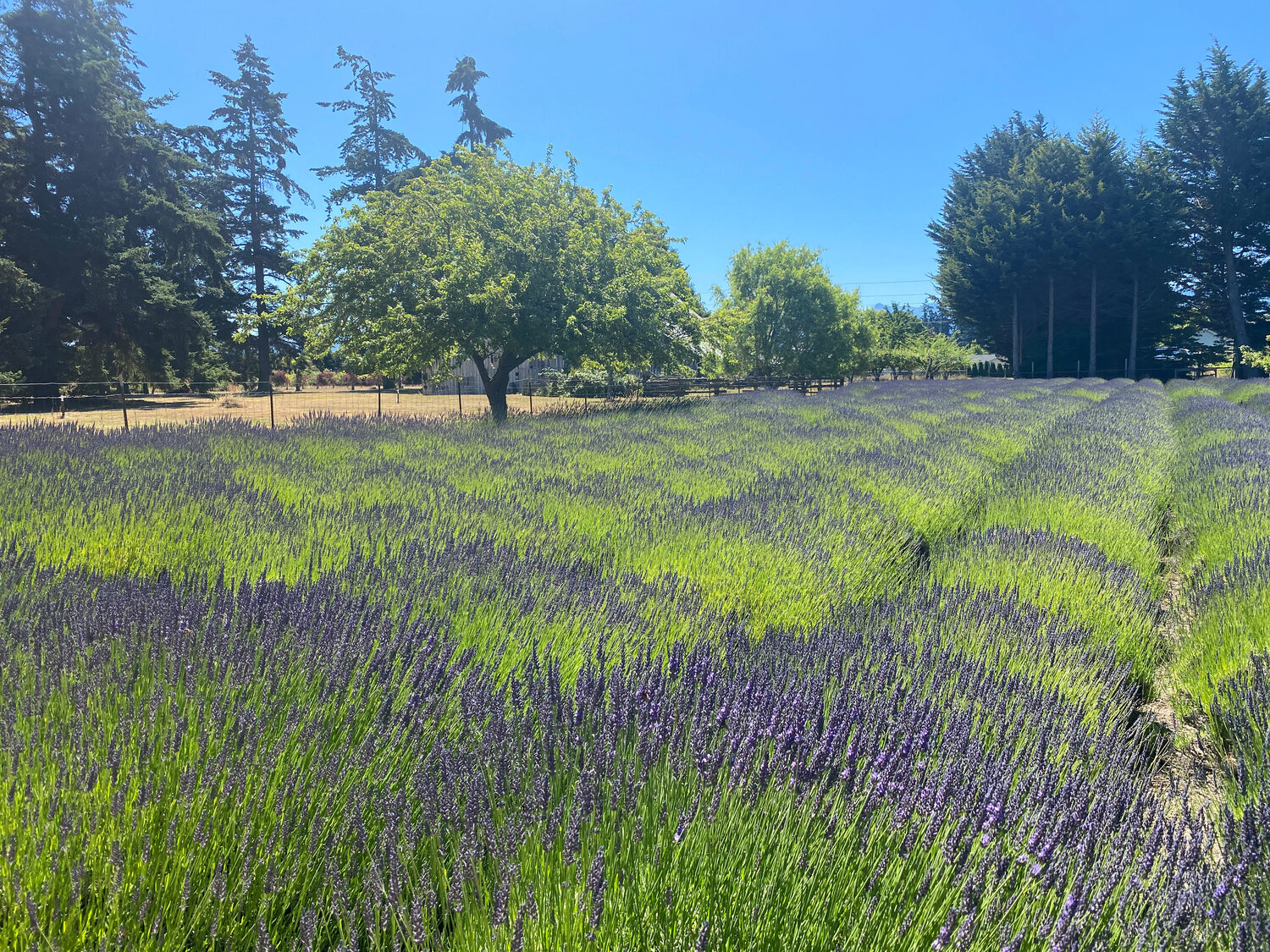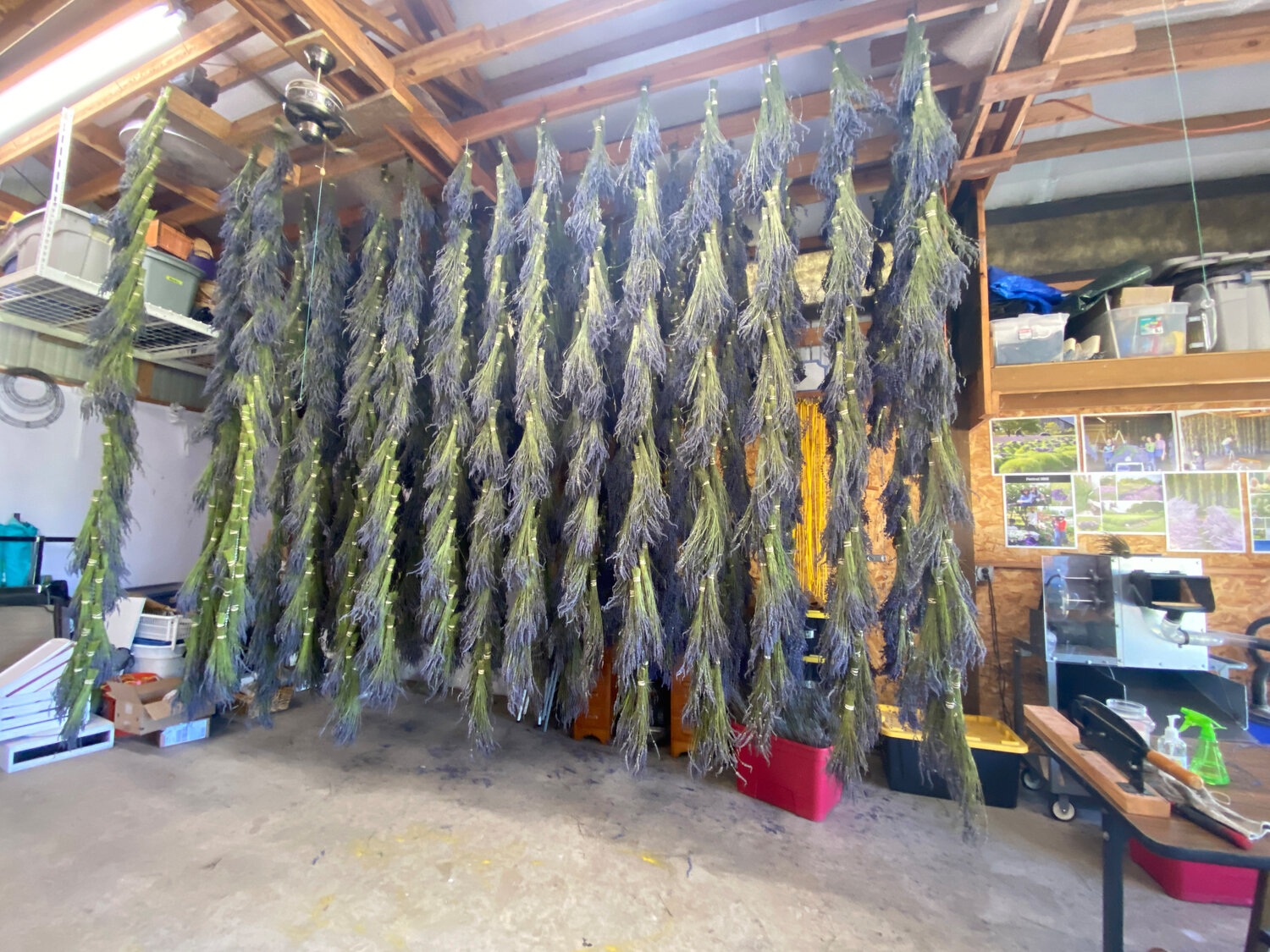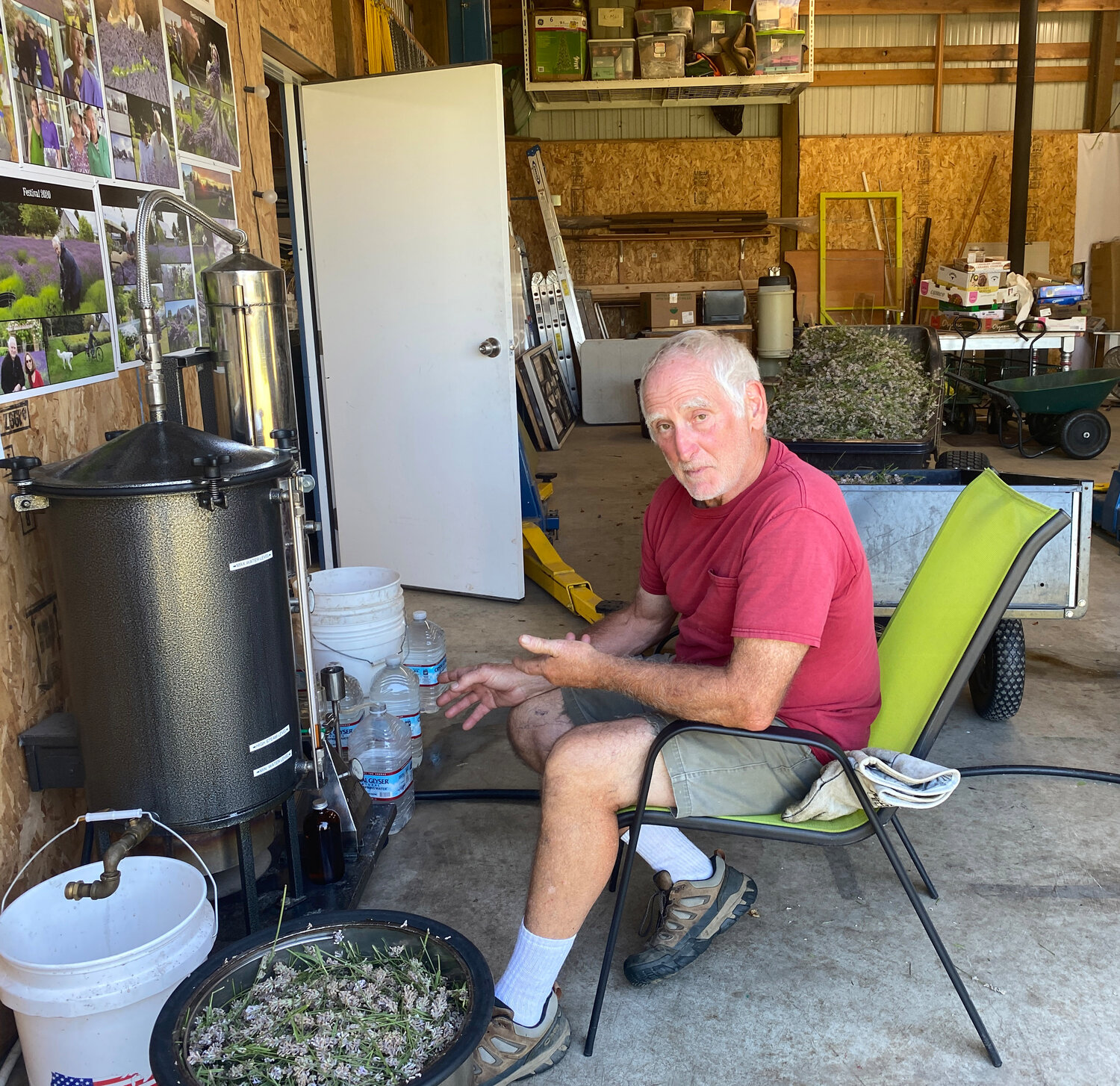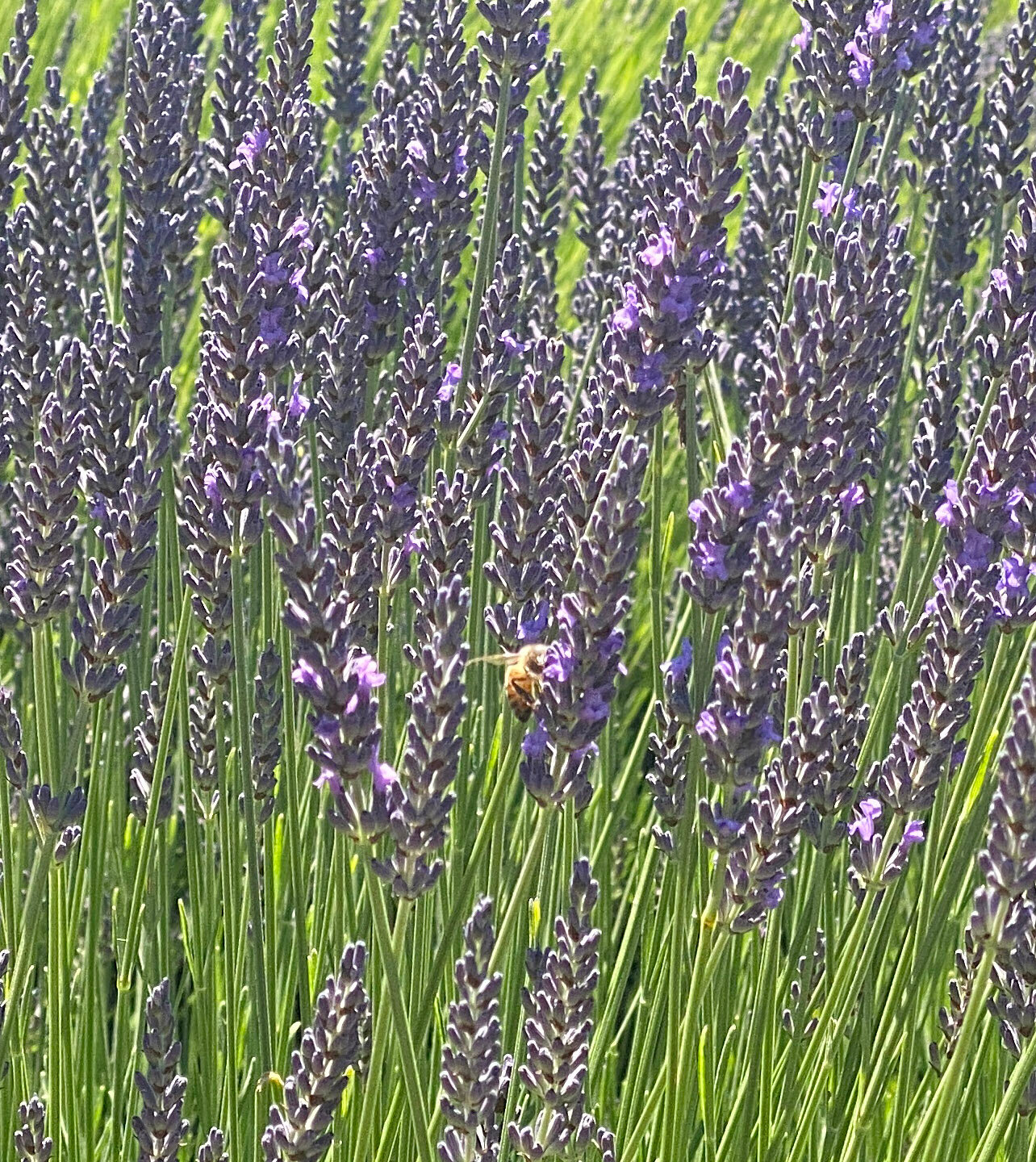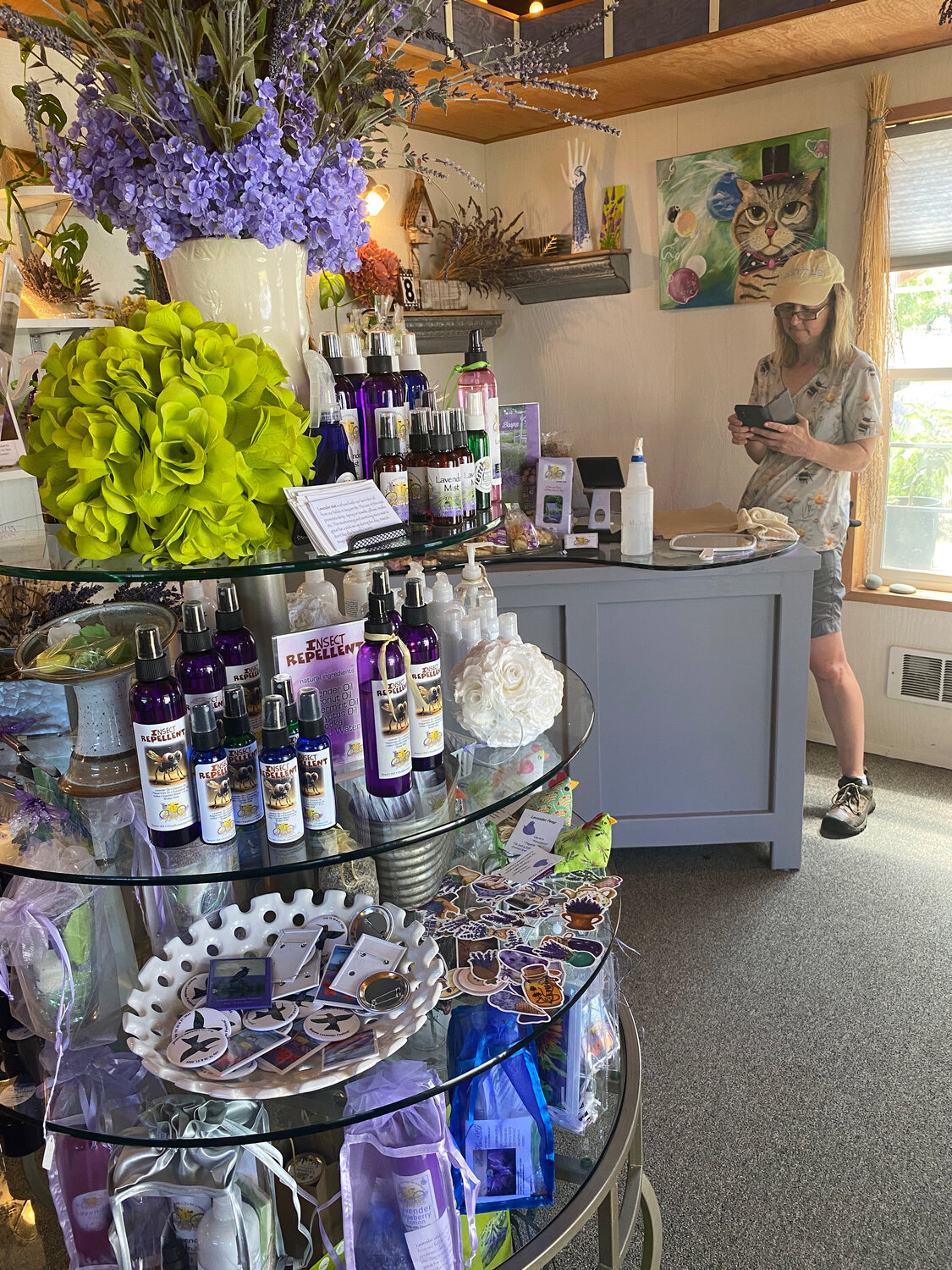Lavender
I had never given lavender much thought before a recent visit to the lavender-growing area of the Pacific Northwest. I was on a solo road trip around the Olympic Peninsula with time between my pre-booked lodgings to look around. And, on the north end of the peninsula, I saw a sign about an upcoming lavender festival, and as the highway passed through a town, Sequim, lavender-colored flags were proudly displayed. I pulled to the side of the road and Googled “farms” in the area, and found a bunch of them. I randomly picked one, “Kitty B’s Lavender Farm,” and headed off a country road to find it.
And wow, was I in luck! The Lavender Festival, a yearly event in Sequim that rivals Fernandina’s Shrimp Festival in scope and attendance, was to be held the following weekend. But on the Tuesday before, there were no visitors and only one person around, the owner, Erich Bockelie. “I’ve never been to a lavender farm,” I told him. “What is this all about?” “Well, come see what I am doing.” And he led me into a barn.
One side of the barn was full of long strands of lavender on stems drying out for later processing, just like the scene I’ve seen in tobacco farms along my travels, but much nicer smelling. Erich pointed out the small containers of culinary lavender off to the side, and then he settled on a chair in front of a steam distiller and a bucket full of lavender stems and buds. Water and lavender plant material are heated into steam, which then gets separated into two parts, the essential lavender oil and the spent water, called hydrosol, which, some say, is a good cleaning product. This was interesting for a while, but then I left him to his work to walk around the blooming, sweet-smelling lavender gardens, enjoying the experience without the thousand or more people that will be at this farm the coming weekend.
Soon Erich came out to join me and showed me around a bit more. He showed me the different varieties of lavender he was growing, and we both noticed that one batch had attracted a host of bees. “Those stems need to be harvested soon. The bees always tell me.” And he pointed out another row of plants that he will need to replace soon. As the plants age, their stems get shorter, he told me, and they are too short to hang on the drying racks. He was a wealth of information but also a very busy man, so I thanked him profusely for his time and went alone into the on-premises shop selling every product imaginable using lavender -- soaps, lotions, teas, perfumes, sachets, decorations, you name it, it was there.
Many people think of lavender fields in association with the Provence region of France, which, according to a recent National Geographic article, has more than 1700 lavender producers on more than 62,000 acres of land. But it seems that now climate change is impacting these fields. As the temperature warms, more lavender pests flourish, and more periods of drought are weakening the crops, too. One helpful solution is to practice agroforestry by alternating rows of lavender with other soil-enhancing crops and providing a break between lavender rows that limits the spread of pests. But, with that solution, there goes the continuous fields of only lavender flowers that attract millions of visitors each summer. For now, though, the fields around Sequim, Washington and elsewhere in the Pacific Northwest are still planted in solid rows of lavender flowers that still provide the visual feast so sought after by many.
Lavender oil is said to have many medical benefits, including helping with pain relief, digestive issues, skin infections, anxiety, depression, and sleep problems. But for many, the scent of lavender just plain smells good, and lavender products are soothing for mind and body. You don’t have to go to France or the Pacific Northwest or look to Amazon to find lavender products. Here on Amelia Island, there is a wide selection of lavender products in a shop just off Centre Street, Pelindaba Lavender. The Pelindaba farm on San Juan Island, Washington, the source of their products, has recently gone out of business, but have no fears, the store will remain. After many tests of lavender oils from various Pacific farms, a new source of lavender oil and products with the same subtle scent as Pelindaba lavender has been found in Oregon, and soon, the store will be renamed.
And now that I know more about lavender, I will definitely be among their customers.
Pat Foster-Turley, Ph.D., is a zoologist on Amelia Island. She welcomes your nature questions and observations. [email protected]

